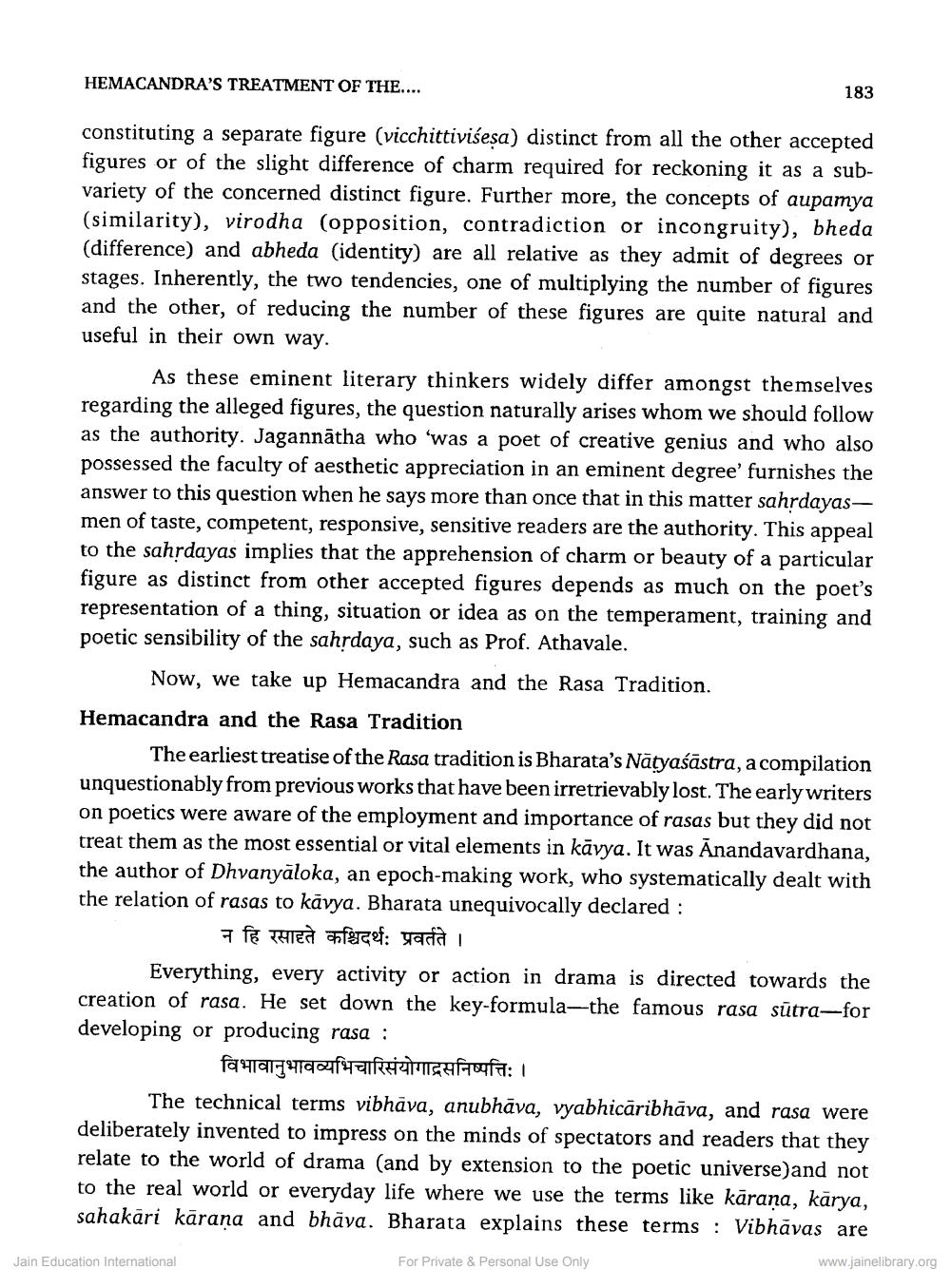________________ HEMACANDRA'S TREATMENT OF THE.... 183 constituting a separate figure (vicchittivisesa) distinct from all the other accepted figures or of the slight difference of charm required for reckoning it as a subvariety of the concerned distinct figure. Further more, the concepts of aupamya (similarity), virodha (opposition, contradiction or incongruity), bheda (difference) and abheda (identity) are all relative as they admit of degrees or stages. Inherently, the two tendencies, one of multiplying the number of figures and the other, of reducing the number of these figures are quite natural and useful in their own way. As these eminent literary thinkers widely differ amongst themselves regarding the alleged figures, the question naturally arises whom we should follow as the authority. Jagannatha who 'was a poet of creative genius and who also possessed the faculty of aesthetic appreciation in an eminent degree' furnishes the answer to this question when he says more than once that in this matter sahrdayasmen of taste, competent, responsive, sensitive readers are the authority. This appeal to the sahrdayas implies that the apprehension of charm or beauty of a particular figure as distinct from other accepted figures depends as much on the poet's representation of a thing, situation or idea as on the temperament, training and poetic sensibility of the sahrdaya, such as Prof. Athavale. Now, we take up Hemacandra and the Rasa Tradition. Hemacandra and the Rasa Tradition The earliest treatise of the Rasa tradition is Bharata's Natyasastra, a compilation unquestionably from previous works that have been irretrievably lost. The early writers on poetics were aware of the employment and importance of rasas but they did not treat them as the most essential or vital elements in kavya. It was Anandavardhana, the author of Dhvanyaloka, an epoch-making work, who systematically dealt with the relation of rasas to kavya. Bharata unequivocally declared : 7 FE TEN ofergef: yarati Everything, every activity or action in drama is directed towards the creation of rasa. He set down the key-formula--the famous rasa sutra-for developing or producing rasa : विभावानुभावव्यभिचारिसंयोगाद्रसनिष्पत्तिः / The technical terms vibhava, anubhava, vyabhicaribhava, and rasa were deliberately invented to impress on the minds of spectators and readers that they relate to the world of drama (and by extension to the poetic universe)and not to the real world or everyday life where we use the terms like karana, karya, sahakari karana and bhava. Bharata explains these terms: Vibhavas are For Private & Personal Use Only Jain Education International www.jainelibrary.org




